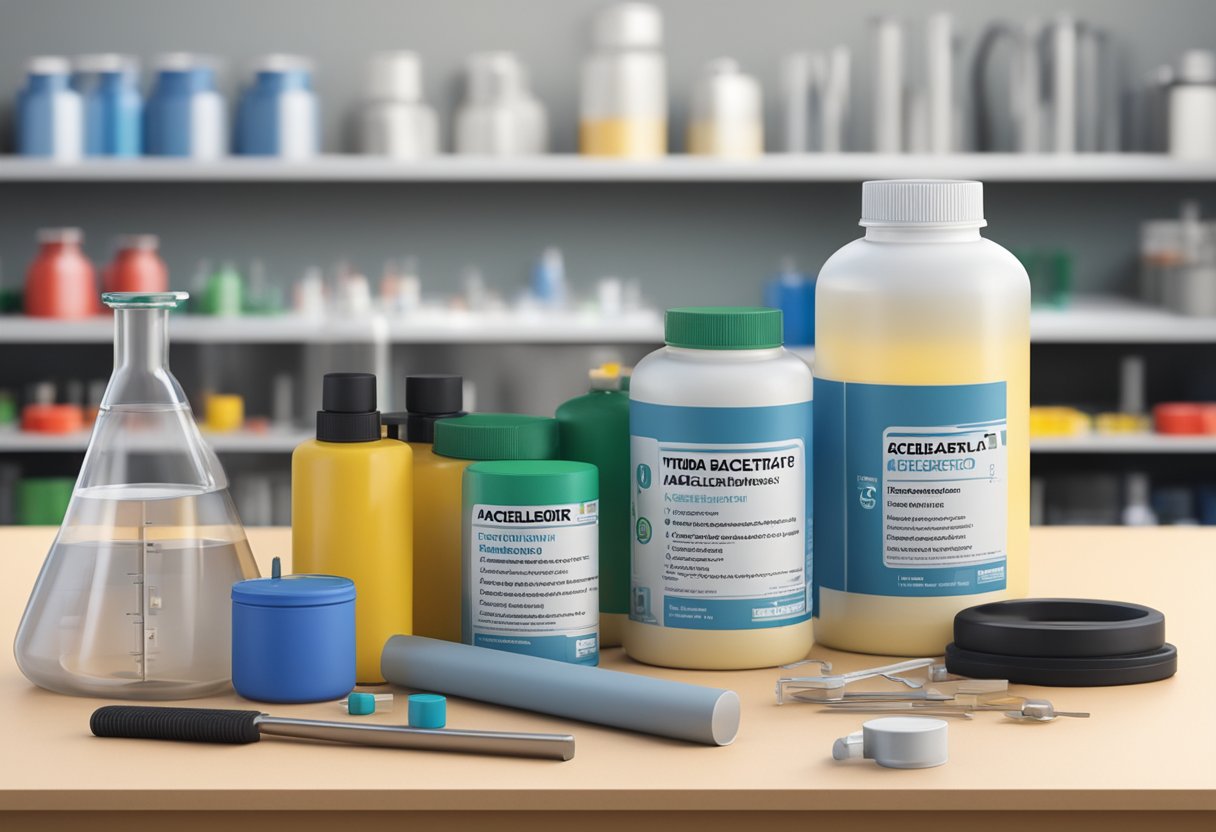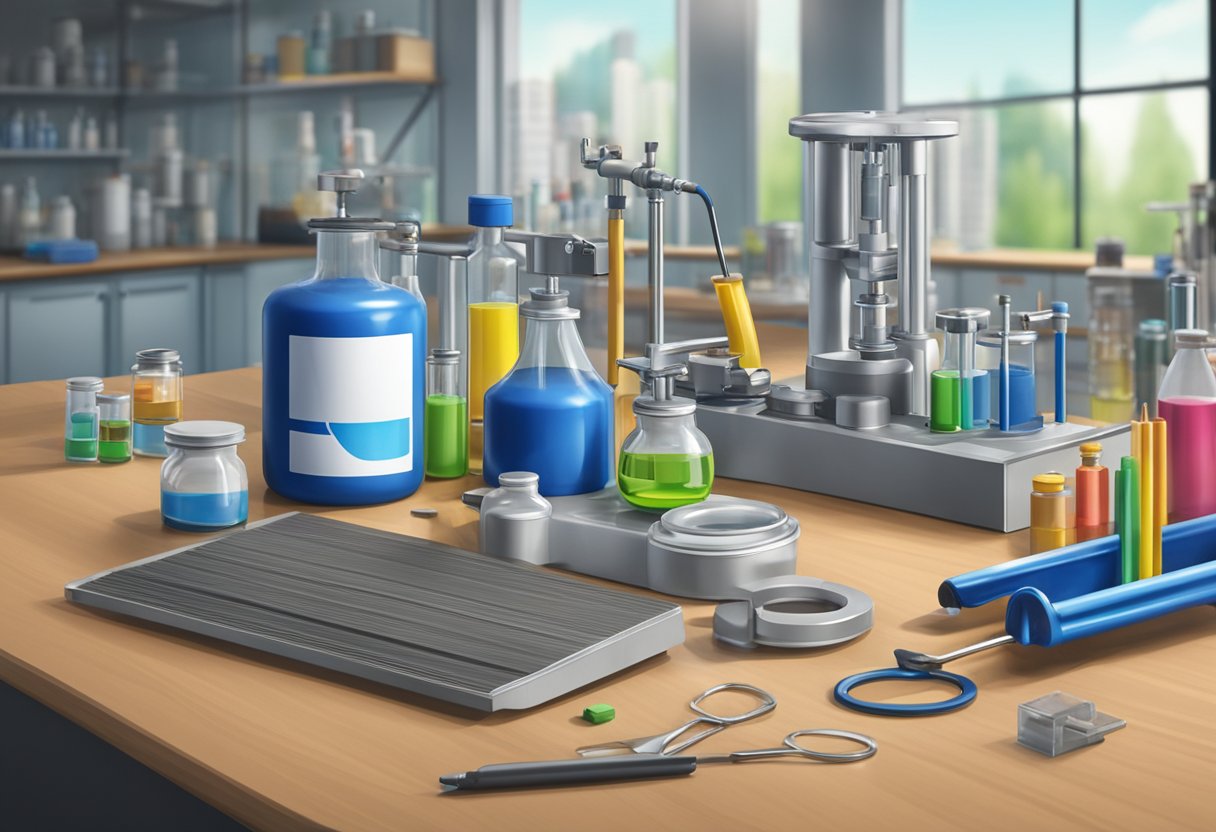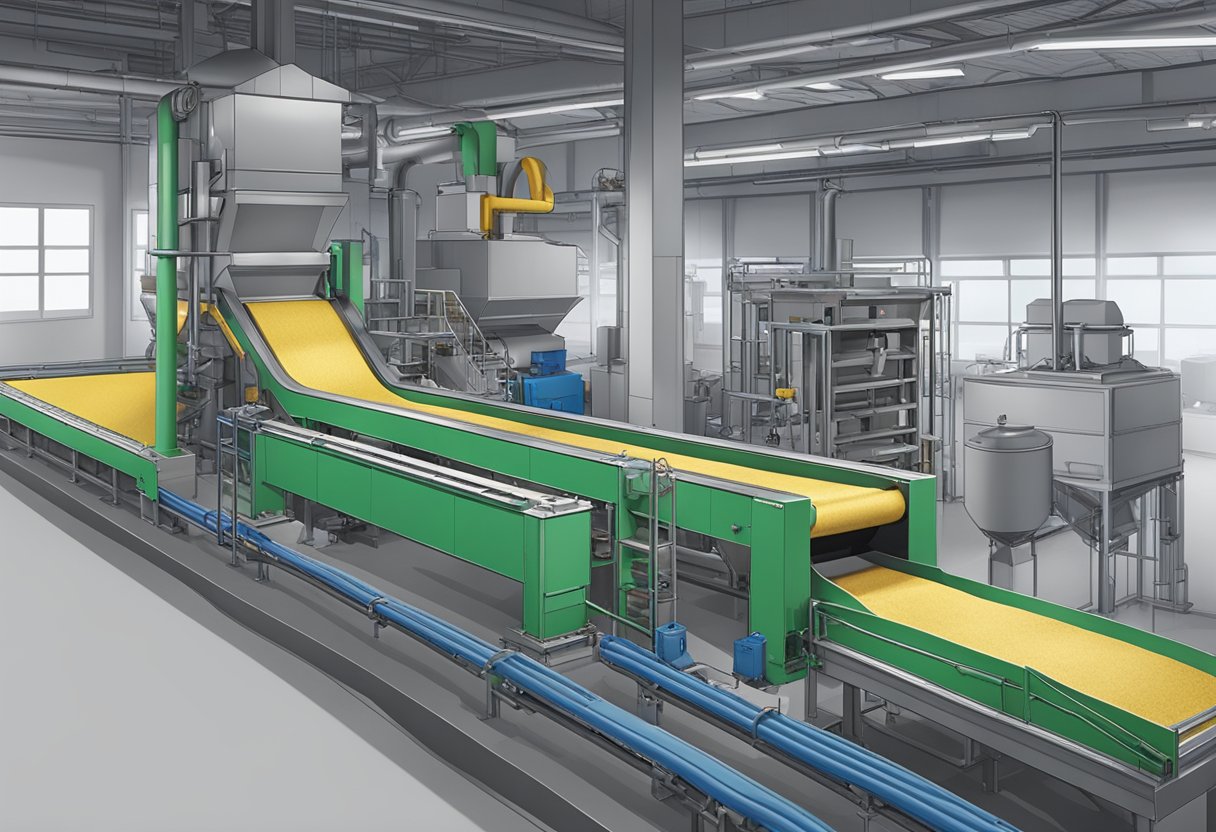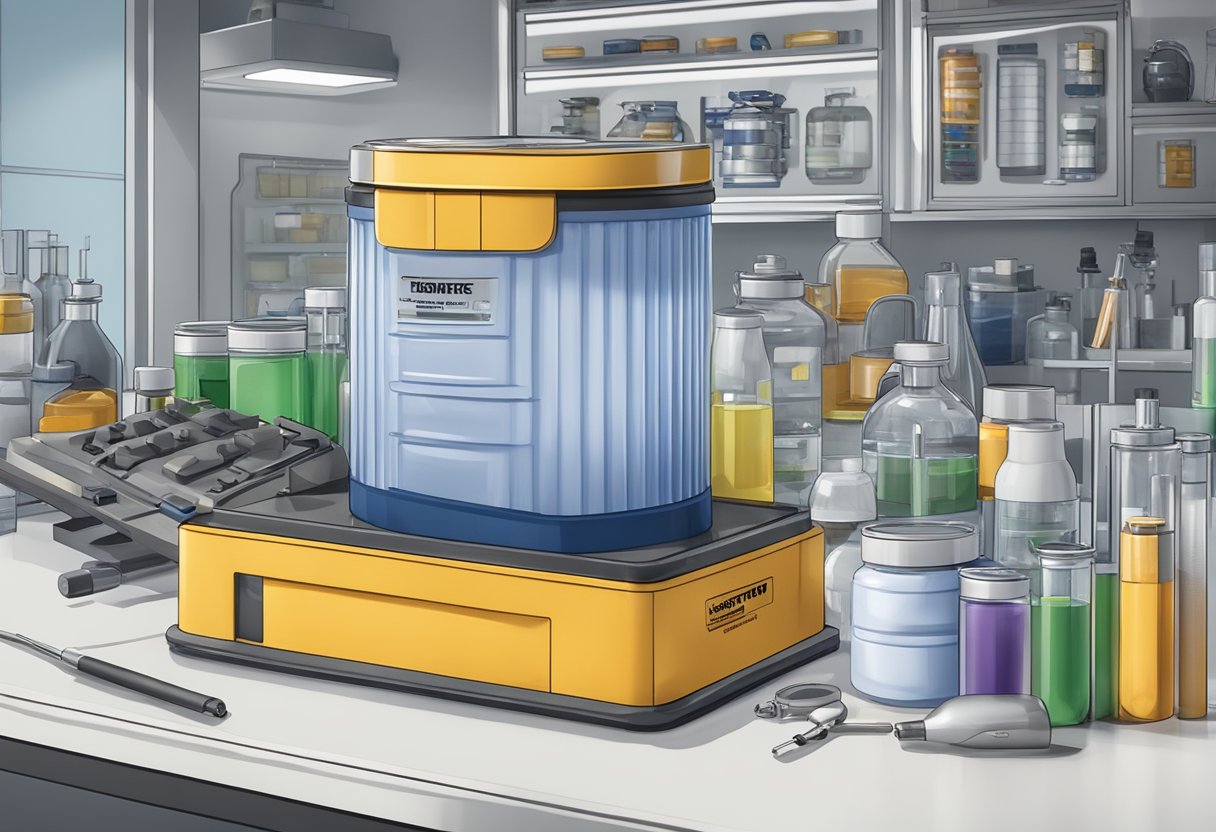TMTD Rubber Accelerator: Properties and Applications
19/01/2024
TMTD rubber accelerator is a chemical compound commonly used in the production of rubber products. It is a white or light yellow powder that is soluble in benzene, acetone, and carbon tetrachloride. TMTD is known for its ability to accelerate the vulcanization process of rubber, which is the process of converting natural rubber or other elastomers into a more durable and elastic material.

TMTD is also known by its chemical name, tetramethylthiuram disulfide. It is classified as a thiazole accelerator and is used in the production of a wide range of rubber products, including tires, hoses, belts, and seals. TMTD is particularly effective in accelerating the vulcanization of natural rubber, but it can also be used with other elastomers such as styrene-butadiene rubber and nitrile rubber.
The use of TMTD in rubber production has been the subject of some controversy due to concerns about its potential health and environmental impacts. However, when used in accordance with industry standards and regulations, TMTD is considered a safe and effective accelerator for rubber production. This article will explore the properties and uses of TMTD, as well as its potential benefits and risks.
Chemical Properties

Chemical Structure
TMTD (Tetramethylthiuram Disulfide) rubber accelerator is a sulfur-containing organic compound with the chemical formula C6H12N2S4. It is a yellowish or white powder that is soluble in water, ethanol, and benzene. The chemical structure of TMTD consists of a thiuram disulfide group, which is responsible for its vulcanization properties.
Physical Characteristics
TMTD has a melting point of 142-147°C and a boiling point of 305°C. It has a density of 1.37 g/cm³ and a molecular weight of 240.43 g/mol. TMTD is highly soluble in organic solvents, but only slightly soluble in water. It has a faint odor and is non-toxic.
TMTD is a highly effective rubber accelerator that is widely used in the production of rubber products. It is known for its fast curing speed and excellent scorch resistance. However, it is important to handle TMTD with care, as it can cause skin and eye irritation. Overall, TMTD is a valuable chemical in the rubber industry due to its unique chemical properties.
Production Process

TMTD rubber accelerator is produced through a multi-step process that involves several chemical reactions. The process begins with the reaction of aniline and carbon disulfide, which produces dithiocarbamate salt.
The dithiocarbamate salt is then reacted with methyl alcohol to produce methyl dithiocarbamate. This intermediate product is then reacted with sulfur to produce methylthio-2-mercaptobenzothiazole (MMT), which is the primary component of TMTD rubber accelerator.
The MMT is then purified and dried to remove any impurities. The final product is a white or yellowish powder that is soluble in acetone, benzene, and ethanol.
The production process of TMTD rubber accelerator requires strict quality control to ensure that the final product meets the required specifications. The use of high-quality raw materials and advanced production techniques is critical to achieving consistent product quality.
Overall, the production process of TMTD rubber accelerator is a complex and highly controlled process that requires expertise and attention to detail.
Applications

Rubber Manufacturing
TMTD rubber accelerator is widely used in the production of rubber goods due to its excellent properties. It is commonly used as a secondary accelerator in combination with other accelerators such as MBTS, MBT, and CBS. TMTD is particularly effective in the vulcanization of natural and synthetic rubbers, and it can improve the processing safety and storage stability of rubber compounds.
TMTD can also promote the cross-linking of rubber molecules, which increases the strength, durability, and resistance of rubber products to heat, aging, and chemicals. It is commonly used in the production of tires, hoses, belts, seals, gaskets, and other rubber products.
Industrial Uses
TMTD rubber accelerator is also used in various industrial applications. It is commonly used as a fungicide and bactericide in the agriculture industry to protect crops from diseases. It can also be used as a preservative in the food industry to extend the shelf life of products.
In addition, TMTD is used in the production of adhesives, coatings, and sealants. It can improve the adhesion, bonding, and curing properties of these products, and it can also enhance their resistance to weathering and chemicals.
Overall, TMTD rubber accelerator is a versatile and effective chemical that has a wide range of applications in various industries. Its properties make it an essential component in the production of rubber goods, and it is also used in other industrial applications to improve the performance and durability of products.
Health and Safety
Exposure Risks
TMTD rubber accelerator is classified as a hazardous substance and therefore, it is important to take necessary precautions when handling it. Exposure to TMTD can occur through inhalation, skin contact, and ingestion.
Inhalation of TMTD dust or vapors may cause respiratory irritation, coughing, and shortness of breath. Prolonged exposure may lead to more serious respiratory problems. Skin contact with TMTD can cause irritation, redness, and itching. Ingestion of TMTD can lead to gastrointestinal irritation, nausea, and vomiting.
To minimize the risk of exposure, it is recommended to wear appropriate personal protective equipment such as gloves, protective clothing, and respiratory protection. It is also important to work in a well-ventilated area and avoid creating dust when handling TMTD.
Handling and Storage
TMTD should be stored in a cool, dry, and well-ventilated area away from sources of ignition. It should be kept in a tightly closed container and labeled properly.
When handling TMTD, it is important to follow good industrial hygiene practices such as washing hands thoroughly after handling and avoiding eating or drinking in the work area.
In case of accidental exposure or ingestion, seek medical attention immediately and provide the medical personnel with the appropriate safety data sheet for TMTD.
Overall, it is important to handle TMTD with care and follow the recommended safety guidelines to minimize the risk of exposure and ensure a safe working environment.
Regulatory Compliance
TMTD rubber accelerator is subject to regulatory compliance in various countries due to its potential health and environmental hazards. In the European Union, TMTD is classified as a “substance of very high concern” under the REACH regulation due to its toxic effects on reproduction and the environment.
In the United States, TMTD is regulated by the Environmental Protection Agency (EPA) under the Toxic Substances Control Act (TSCA). TMTD is listed on the TSCA inventory and is subject to reporting and testing requirements.
In China, TMTD is regulated by the Ministry of Ecology and Environment (MEE) under the Law on the Prevention and Control of Environmental Pollution Caused by Solid Wastes. TMTD is classified as a hazardous waste and is subject to strict handling and disposal requirements.
Manufacturers and users of TMTD must comply with these regulations to ensure the safe handling and use of the substance. Failure to comply with these regulations can result in fines, legal action, and damage to health and the environment.
Environmental Impact
TMTD rubber accelerator has been found to have negative impacts on the environment. The chemical is toxic to aquatic life and can cause long-term damage to ecosystems. In addition, TMTD can persist in the environment for extended periods of time, leading to bioaccumulation in the food chain.
One of the primary environmental concerns associated with TMTD is its potential to contaminate soil and groundwater. The chemical can leach into the soil and persist for years, leading to long-term contamination of groundwater supplies. This contamination can have serious consequences for both human health and the environment.
Another concern is the impact of TMTD on air quality. The chemical can be released into the air during manufacturing and use, leading to respiratory problems for workers and nearby residents. Additionally, TMTD can contribute to the formation of smog and other air pollutants, which can have negative impacts on human health and the environment.
To mitigate the environmental impact of TMTD, it is important to handle and dispose of the chemical properly. This includes using protective equipment during manufacturing and handling, as well as following proper disposal procedures. Additionally, alternative rubber accelerators that have lower environmental impact should be considered.
Market Insights
TMTD rubber accelerator is a widely used chemical compound in the rubber industry. The global TMTD market is expected to grow at a steady pace in the coming years due to the increasing demand for rubber products in various end-use industries such as automotive, construction, and footwear.
The Asia-Pacific region is expected to dominate the TMTD market due to the high demand for rubber products in countries such as China and India. The region is also witnessing a significant increase in the production of rubber products, which is expected to drive the demand for TMTD in the coming years.
The growing demand for eco-friendly and sustainable products is also expected to boost the demand for TMTD in the near future. TMTD is considered to be a more eco-friendly alternative to other rubber accelerators, and its demand is expected to increase as more companies focus on sustainable manufacturing practices.
However, the TMTD market is also facing some challenges such as the fluctuating prices of raw materials and the increasing competition from other rubber accelerators. The market players are focusing on research and development to improve the properties of TMTD and make it more cost-effective.
Overall, the TMTD market is expected to grow at a steady pace in the coming years due to the increasing demand for rubber products in various end-use industries and the growing focus on sustainable manufacturing practices.
Future Developments
TMTD rubber accelerator has been widely used in the rubber industry for many years, and its demand is expected to continue to grow in the coming years. Manufacturers are constantly looking for ways to improve the performance of TMTD and make it more environmentally friendly.
One area of development is the use of alternative raw materials to produce TMTD. Researchers are exploring the use of renewable resources such as biomass and waste materials as a source of sulfur for TMTD production. This could reduce the reliance on non-renewable resources and help to reduce the environmental impact of TMTD production.
Another area of development is the improvement of TMTD’s performance properties. Manufacturers are working on developing new formulations that can improve TMTD’s heat resistance, aging resistance, and other performance properties. This could lead to the production of more durable and longer-lasting rubber products.
Finally, manufacturers are also exploring the use of TMTD in new applications. TMTD has traditionally been used in the production of tires, but there is potential for it to be used in other rubber products such as conveyor belts, hoses, and seals. This could open up new markets for TMTD and increase its demand in the future.
Overall, the future of TMTD looks bright, with ongoing research and development aimed at improving its performance and sustainability. As the rubber industry continues to grow, TMTD is likely to remain a key component in the production of high-quality rubber products.




